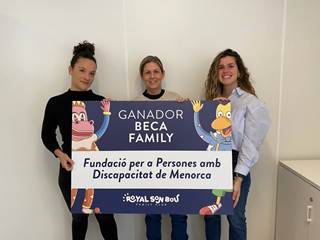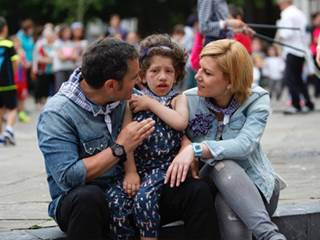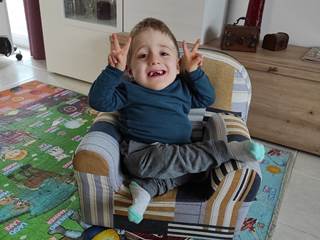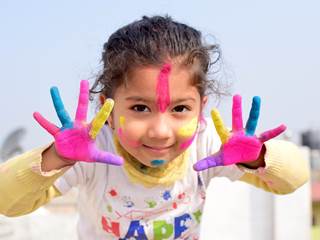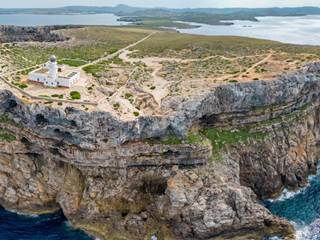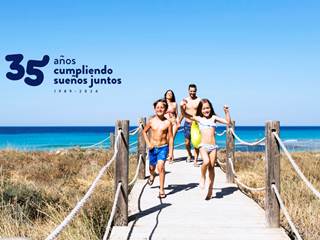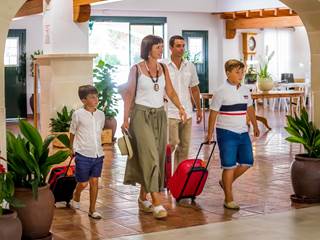Royal Family Care
Julia Piniella, director of AHUCE: "Physiotherapy in patients with osteogenesis imperfecta helps to prevent many ills"
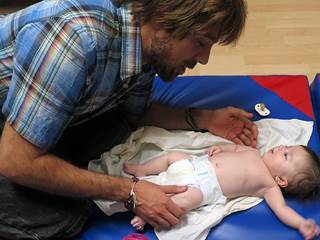
When Julia Piniella, director of the AHUCE Foundation, was told that her project was the winner of the 2020 Family Grant from Royal Son Bou, she thought directly of the 30 families she would be able to help. Osteogenesis Imperfecta (OI), or Crystal Bone Disease, is the area addressed by the foundation she leads. And that it focuses above all on the investigation of this genetic anomaly that causes, for those who suffer from it, chronic pain, breakages and a quality of life conditioned to the disease. " But you can do a lot with physiotherapy, especially if you start at birth," Julia says. For this reason, she has left aside the research aspect and has presented the Family Grant with an assistance project, for which some 30 minors will benefit from vouchers for their physiotherapy sessions.
To what extent will you be able to help these 30 families with physiotherapy vouchers?
Well, it is a great help for them, because physiotherapeutic treatments are not considered essential in the public system for people suffering from osteogenesis imperfecta. So each family has to pay for their own treatments, which sometimes can be up to 3 or 4 sessions a week. During 2020, with the health pandemic, there have been many people who have seen their economic situation worsen. So, when we allocate the bonds that we will pay with the 3,000 euros of the Family Grant, we will take into account clinical criteria, but also socioeconomic.
How are they going to get those bonds?
First, we will carry out a study from the Foundation of the cases that come to us to see which are the most important, according to the criteria I mentioned before: the clinical situation of the patient and the socio-economic situation of the family. Our goal is that through the network of physiotherapists who collaborate with us across the country each beneficiary can receive treatment in his or her place of residence. For a person who does not have osteogenesis imperfecta, physical therapy is a tool to relieve some pain or discomfort. For an OI patient, it can change the quality of life and improve it substantially.
So can physical therapy cure OI patients?
No. OI is a congenital genetic disorder and has no cure. For now, but it has been demonstrated that physiotherapeutic treatment at very early ages helps to improve the quality of life in a remarkable way. The big problem with OI is that it is a very heterogeneous disease, in the sense that you can have very mild or very severe symptoms. And in between, the whole range of possible degrees. In addition to physical therapy, there are people who need surgery and medicine. There will even be people who, with a very low degree of illness, hardly need physiotherapy. But we know that this type of treatment during childhood helps to reduce pain, to strengthen the muscles, to coordinate the balance, to avoid fractures, to prevent deformities. . . Avoiding immobility since childhood, we help them to have a better quality of life when they reach adulthood, changing through physiotherapy the natural course of the disease.
What causes OI and why is it also called crystal bone disease?
Actually, OI is a genetic mutation. Until recently, we knew there were 4 genes involved in this mutation. Thanks to the advances in research that we promote from the Foundation, today we know that there are at least about 20. OI is considered a rare disease, because it is estimated that in Spain there may be between 3,500 and 4,000 people affected, although we do not have a real census. From the Foundation, we work directly with at least 600. And each one has a different degree of mutation with different symptoms, which complicates the work of detecting the disease. In the most severe cases, babies are not even born alive. Others have deformities, very short stature, chronic pain, etc. And multiple bone fractures with movements that, for those without OI, are totally normal. Hence it is called the crystal bone disease. At the other end, we have patients who barely notice symptoms. Adding physical therapy to the treatments for any of these patients helps them have fewer fractures. This avoids many hospital admissions and surgical interventions.
What is the objective that you have as a Foundation for these patients?
In the care aspect, which is the one we are going to cover with the Royal Son Bou Family Grant, we try to ensure that the disease is not the centre of people's lives. A good education about the pathology they suffer and make available to them treatments that help them to have a life as worthy as possible in spite of their illness. We also involve the family a lot, who can help, and a lot, by turning each case into an integral project. On the scientific side, we work to discover the secrets of this chronic and congenital disease. The progress we have made so far is remarkable. But, like everything else in 2020, we are suffering the crisis of the health pandemic. In addition, it must be taken into account that, like AHUCE, there are two entities: we, who are the Foundation and were born in 2011; and the AHUCE Association, which is in Madrid and has been active for 26 years. They mainly carry the welfare part. And we are wired to cover social projects that the Association does not reach. And in 2020, although we do not want to leave research aside, despite the drop in income we receive through donations, companies that invest in corporate social responsibility or projects such as the Family Grant, we have given priority to a welfare project. Because there are many families in great need of these vouchers for physical therapy sessions.
How did you come up, from Valencia, to present a state project to the Royal Son Bou Family Grant, in Menorca?
Because we have a close relationship with Menorca, through a family that lives in the area of Maó. With them, we have been organizing for 4 years the "cursa del Toro", which is a charity race. With the money we raised, we were able to start a research project at the genetic level which, together with other international research teams, has allowed us to describe and discover a new gene related to osteogenesis imperfecta. And this discovery allows us to open new therapeutic targets, improve the quality of life and make treatments more personalized. Thanks to this collective effort, starting with the family of Menorca, we are closer to finding a possible cure.


